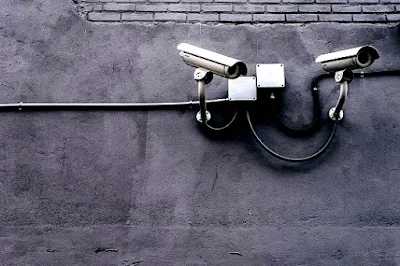Is your wireless network secure? Are you concerned about your neighbors stealing your internet? It may be shocking to hear that neighbors in your wireless network can take much more than your internet. If you have an unprotected wireless network, you may be sharing sensitive information such as photos and documents with anyone who connects to your network. Of course, you could share your internet with your neighbors if you wanted to, but securing your wireless network is an easy task if you choose to do it.
Securing The Wireless Network
The first thing you need to do is access your wireless router’s configuration page. You can do this by typing your router’s IP address in your web browser’s address bar. (To find your router’s IP address go to Command Prompt and type ipconfig. The router’s IP will appear as the Gateway. Most IPs for home routers are 192.168.X.X) After you access the configuration page, you will probably have to log in. If your router has a password that you haven’t set, you can find the default password for your router’s model number in your user manual or online. Once you have logged in, look for a Security or Wireless section. Each router is different so it’s difficult to say exactly where your setting will be. You should come up to a page to choose your security options.
You will probably see options for encryption like WEP and WPA. If you have older computers or devices on your wireless network, you might have to use WEP. However, you should choose the highest level of encryption supported by your devices. For example, if you only have computers with XP, Vista, and Windows 7, you would probably choose WPA2 with a custom key. This is nice for two reasons: you will be able to remember your custom key instead of having a long, complicated randomly generated hex, and it is much more difficult for a hacker to crack. Depending on network load, a simple WEP can be hacked in a matter of minutes, where a WPA2 would take years to hack (depending on the technique). A simple tip you can implement to prevent attacks with random word guesses would be to use a mix of characters and numbers in WPA2 encryption which won’t found in a dictionary.
DD-WRT
DD-WRT is free 3rd party firmware for some wireless routers. It adds functionality to cheap routers that you can only find in high-end commercial routers. DD-WRT also adds support for RADIUS. Using DD-WRT you can overclock your router and increase transmit power. You can change your router to use any channel from 1-15 and you can have extra virtual SSID’s for your network. You can have your own DNS configured in the router. You can put your router in hotspot mode so it displays ads and earns you money. You can redirect anyone to any page you want. DD-WRT has real-time graphs where you can see how much bandwidth is being used and how many clients are connected.
DD-WRT is open source for developers who would like to help.
Resolving an IP conflict
The first step to resolve this OS to make sure your computer is automatically getting an IP address and not a set one. This could cause limited connectivity.
Windows Vista
Go to the Networking and Sharing Center. On the left side click manage network adapters.
Windows XP
Go to Start, point to “Connect To” and click show all connections.
Windows 7
Go to the Networking and Sharing Center. On the left side click Change Adapter Settings.
Right-click your ethernet adapter and click properties. Click Internet Protocol (IPv4) and click properties. Make sure it obtains your IP and DNS automatically. If you did not see your adapter in the above steps, you need to download a driver for it. Your computer does not currently recognize your adapter.
Next Step
You need to enable DHCP on your router.
You need to connect to your router and log in to the settings page. Go to http://192.168.2.1 or http://192.168.1.1 or http://192.168.0.1 depending on your router’s brand. The default password is admin/pass, admin/admin, administrator/password, etc. Go to DHCP and enable it.
Getting to your router configuration page
You can use the router configuration page to change wireless modes, SSIDs, DHCP settings, QoS, firewalls, port forwarding, etc.
To get to your Router config page you need to type one of the following in your browser address bar. These are the most common router’s IP’s.
http://192.168.0.1
http://192.168.1.1
http://192.168.2.1
http://192.168.100.1
If your router asks you for a username or password, you can use some of the default ones (the correct one depends on the model of your router)
admin/pass
administrator/password
administrator/blank
Or any combination of the above.

Post a Comment (0)